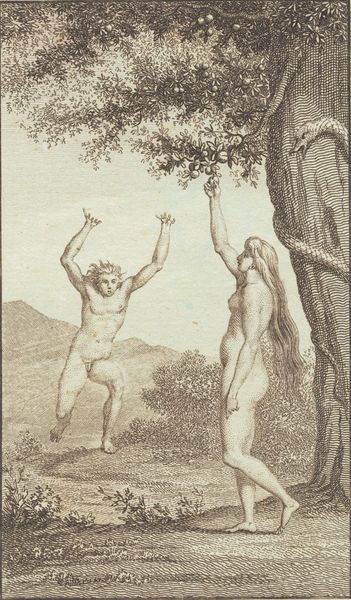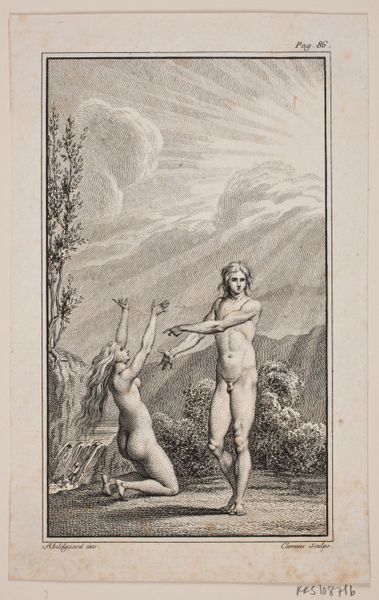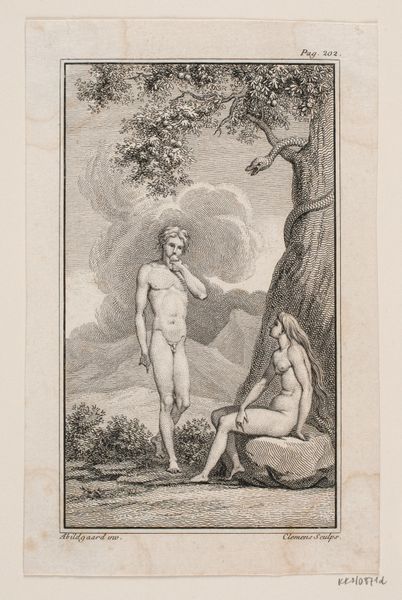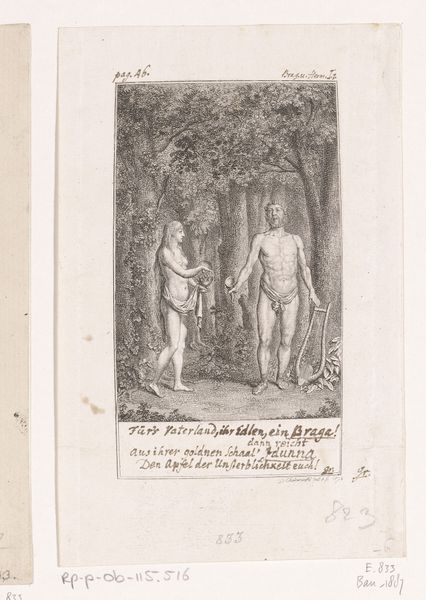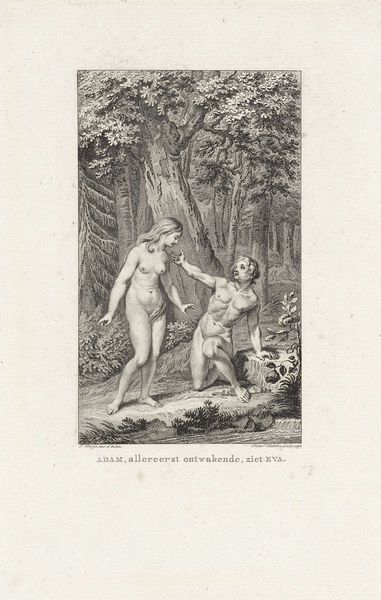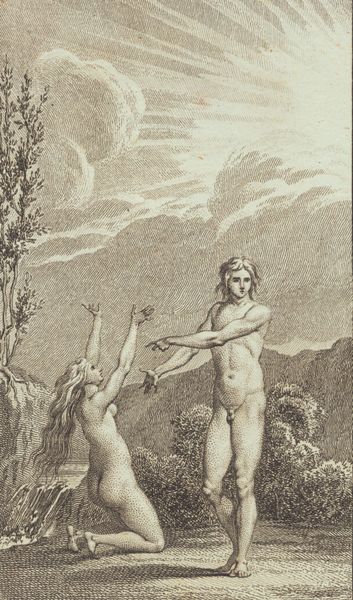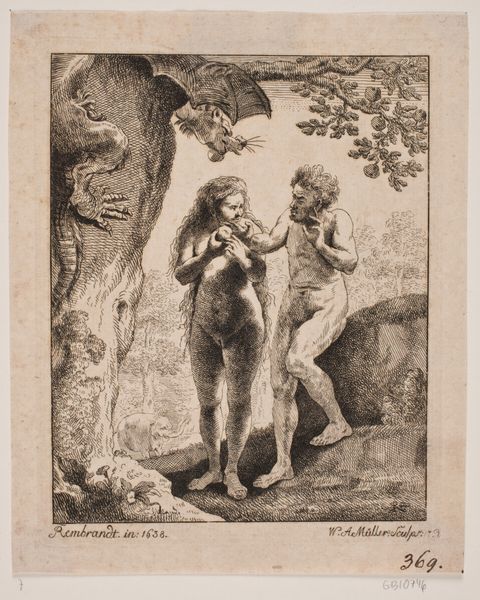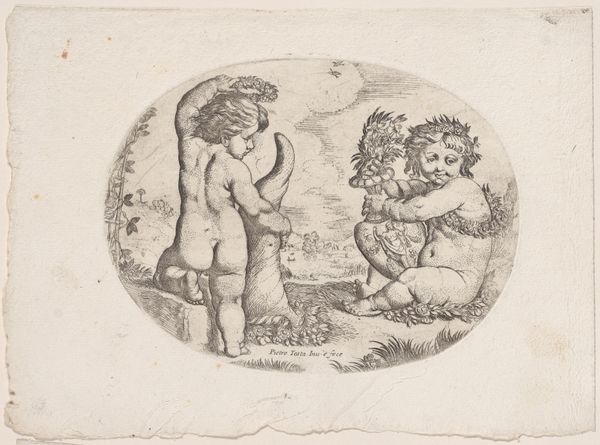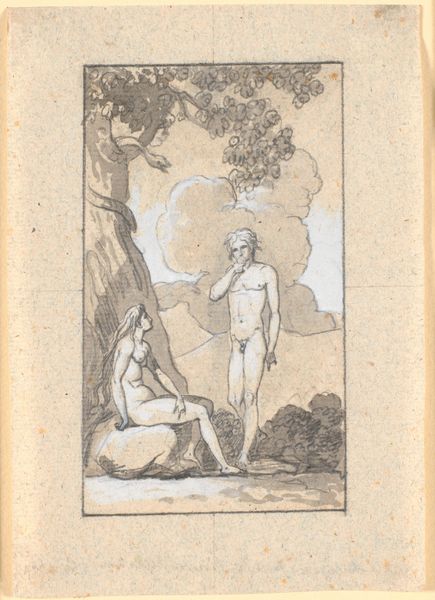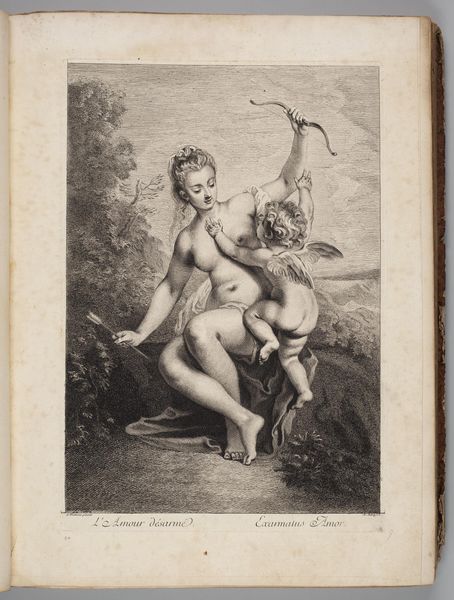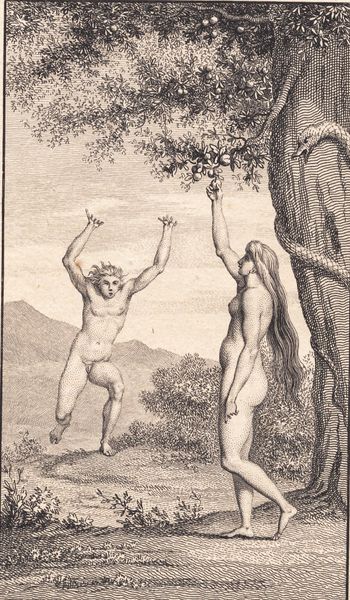
print, engraving
#
neoclacissism
# print
#
landscape
#
classical-realism
#
figuration
#
history-painting
#
nude
#
engraving
Dimensions: 159 mm (height) x 101 mm (width) (bladmaal)
Curator: This is J.F. Clemens's 1780 engraving, "Illustration til Johannes Ewalds 'Adam og Eva' III," which translates to Illustration for Johannes Ewald’s "Adam and Eve" III. What are your initial impressions? Editor: The figures seem strangely weightless, almost floating in this classical landscape. The stark contrast between light and shadow gives it a rather theatrical, dramatic feel, don't you think? Curator: Absolutely. It's worth considering the historical context of this piece. Clemens created it during the Enlightenment, a period defined by reason and a return to classical ideals, so this scene from the Bible gets filtered through those ideas. Editor: True, one sees it clearly in the carefully rendered bodies, attempting an almost sculptural presence in print. The meticulous use of line and texture contributes to that three-dimensional illusion, even though it is a two-dimensional medium. Semiotically, the varying thickness and density in each line produces its own form of tonal value. Curator: And look at how Eve is actively reaching for the fruit while Adam seems caught between desire and hesitation, his body literally caught in mid-stride. That dynamism really embodies the moment of choice and its implications, and reflects the era’s philosophical shift towards free will, yet, it reinforces traditional gender roles that frame the dynamics of decision-making. Editor: I see it less as reinforcing roles and more as establishing an ethical conflict using carefully chosen visual tools. The forbidden fruit glows with promise through the light. Her upright posture suggests confidence—though with potential consequences rippling through her very being—which contrast vividly with the almost frantic desperation implied by Adam's movement. The twisting form of the serpent lurking at the tree’s trunk cannot go without mention; there is something quietly masterful at play within those textures alone. Curator: An important nuance to point out as well is how the figuration echoes throughout art history and its continuing themes concerning gender and power, which continue to be interrogated in art to this day. It shows how art from the past informs contemporary socio-political concerns. Editor: A persuasive reading, indeed. Analyzing form reveals so much. Curator: Understanding form in relationship to the historical contexts reveals still more. Editor: A compelling dialogue to consider regarding its place in both art and the grand scheme of philosophy.
Comments
No comments
Be the first to comment and join the conversation on the ultimate creative platform.
